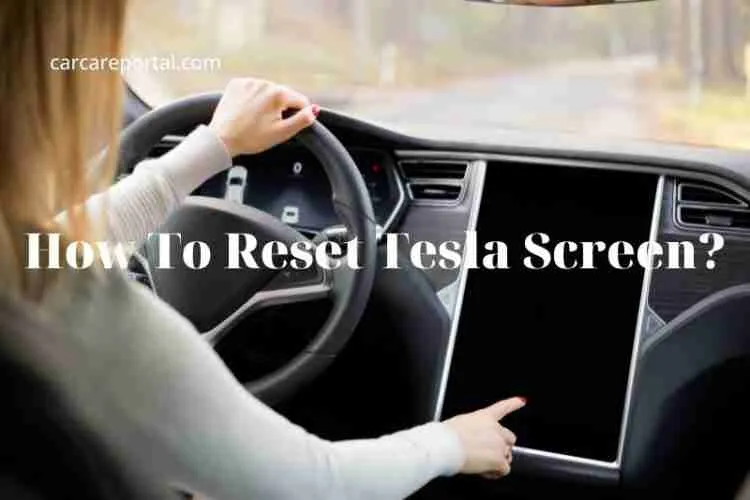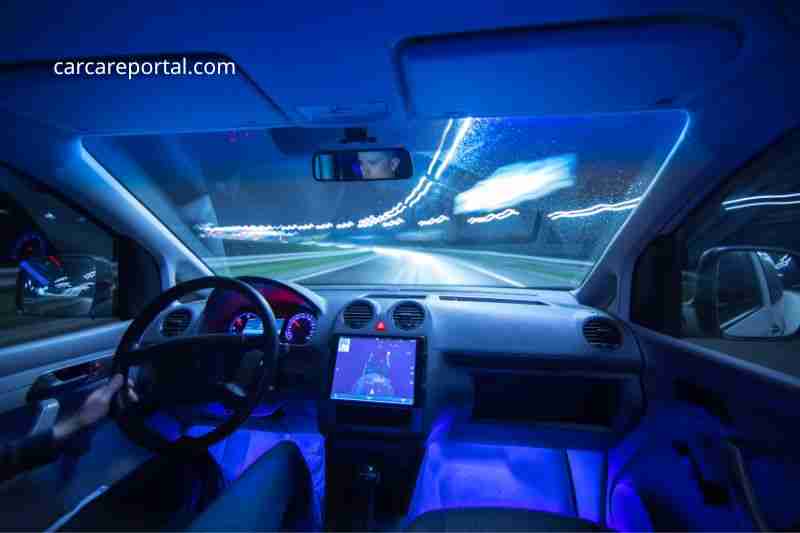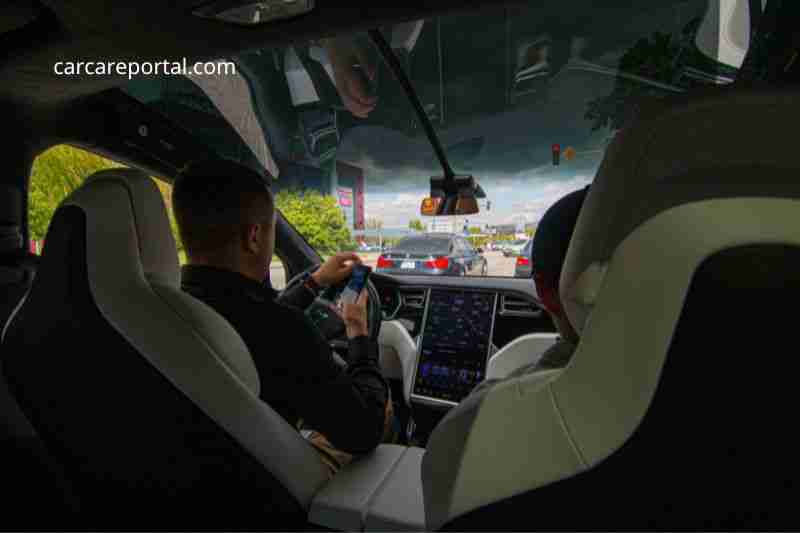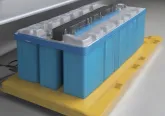How To Reset Tesla Screen? Tips New 2022

How To Reset Tesla Screen? If you’ve ever used a Tesla Model S, or any of the cars in the market today, you’ll know that the keyless start is a pretty recent addition to the automotive market. reset Tesla screen is a term that describes the process of resetting the car’s display, either through your own initiative or support from Tesla. here, we’ll teach you how to do it, step-by-step.
How To Reset Tesla Screen?
Most problems with your Tesla can be resolved with a simple reboot. It works the same on a Model 3, Model Y, Model S, or Model X.
This will resolve issues such as music not playing, the display freezing, and numerous others. It’s simple and quick to do and can even be done while driving, so it should be your first fix.
This reboot will only restart the infotainment center; it will not restart any critical components while driving. The one thing to keep in mind is that the display will turn off and need a few minutes to restart, so during that time, you will not be able to see your speed, hear turn signals or other things that depend on the screen or sound system of the car.
Hold down both scroll wheels on the steering wheel until the display turns off to restart it.
The unit will restart, and you will see the Tesla T logo appear before the screens return.
The restart should take no more than 2-3 minutes.

Tesla Rebooting Options and Steps
There are two types of rebooting methods you can use when your Tesla’s systems are misbehaving (actually, there are three, but the factory reset is a different topic): the soft reboot and the hard reboot.
1. What Is a Soft Reboot (Reset)?
A soft reboot, like the reset button on your phone or Internet modem, resets software while keeping power to equipment. The soft reset allows your Tesla’s software to reboot without discharging and recharging its internal components.
There are two types of soft resets for Tesla: touchscreen resets and complete vehicle resets (also called power cycling in the Tesla Owner’s Manual: essentially, turning it off and back on again, but better, with more systems engaged).
2. What Is a Hard Reboot (Reset)?
A hard reboot (also known as a hard reset) on a Tesla entails unplugging the 12V battery and allowing the electronics to drain before reconnecting the battery.
You should only do this reset on your Tesla if you live far away from a Tesla Service Center or if a mobile tech is too busy to assist you for an extended period. The hard reboot requires going close to the Tesla’s innards and High Voltage equipment. Therefore it’s not for inexperienced drivers.
We want to make a sharp distinction between a soft reboot (reset) and a hard reboot (reset): many people refer to the whole vehicle software reboot as a “hard reboot,” even though it does not entail removing the power supply from the onboard computer system.
While the complete vehicle reset does turn off specific systems, it does not turn off all of them. A full hard reset should ideally eliminate power from the computers, similar to when you remove the battery from your phone.
The distinction between soft and hard reset makes reading forum advice on rebooting a Tesla very confusing, so for this blog, soft reboot = software (screens or entire vehicle), hard reboot = hardware (disconnect of the 12V battery).
3. When Should I Reboot My Tesla?
- When your touchscreen becomes unresponsive or behaves erratically
- When you are experiencing connectivity problems
- When a software update isn’t working properly or has halted
- When error messages are not descriptive or will not clear
- When a Tesla service agent instructs you to “turn it off and back on again”
If you possess a pre-June 2015 Model S with MCU1, you may suffer troubles with connection (mobile internet, maps, and media streaming services) after February 2022, when AT& T eliminates 3G coverage.
Resetting your Tesla will not address the problem; instead, you must arrange an appointment with the service facility to install an LTE-capable modem (currently a $200 upgrade).

How to Reboot (Reset) a Tesla Model S and Model X?
Rebooting a Tesla Model S or Model X looks somewhat different for cars with MCU1 (MCU stands for Media Control Device; essentially, it’s the enormous touchscreen unit) than MCU2. The main difference is that MCU1 may reboot the displays independently, but MCU2 reboots both simultaneously.
The soft reboot restarts the instrument cluster (data readouts above the steering wheel), the touchscreen, or the entire vehicle. The hard reboot disconnects power from all of Tesla’s computer systems and recovers it before restarting.
1. Model S/X Soft Reboot Steps
Clear the Touchscreen and the Instrument Cluster (MCU1 & MCU2)
At the same moment, press and hold both scroll wheels on your Tesla’s steering wheel.
Wait for the touchscreen to become dark before pressing the release button.
After a short time (typically between 10 seconds and a minute, but we suggest waiting at least 30 seconds before evaluating the screen’s responsiveness), the screen will refresh itself.
It is possible to execute this reset while driving your Tesla, but it is not advised. Typically, you should pull over and park before resetting the touchscreen and instrument cluster if you can do so.
If you opt to drive while resetting the displays, the car’s driving capabilities will be preserved even while the screens are refreshing. Please remember that everything you need on the screen to engage/adjust will be unavailable during the reboot procedure. In other words, if you switch off your headlights, you won’t be able to turn them back on until the software reloads. You will also lose HVAC system operation for a brief period until everything is turned back on.
What happens if you reset Autopilot? Currently, Autopilot remains active when the instrument cluster and touchscreen are reset. This does not make restarting Autopilot a brilliant idea, but it is an exciting feature.
Full Soft Reboot of Tesla Model S/X (Reset)
This reboot, also known as a deep reboot, deep reset, or power cycling, cannot be performed until the car is parked. There are two approaches to take. Option #1 should be your first attempt if the touchscreen is working, but if the touchscreen isn’t responding, try Option #2.
Option 1: Model S/X Full Soft Reboot (Reset).
Put the car in park and close all doors.
Controls > Safety and Security > Turn Off
Do not touch anything (brake, doors, steering wheel, touchscreen, etc.) for at least two minutes. (though it may be best to wait for at least five).
After two (or five) minutes have elapsed, hit the brake or open the door to start everything back up again.
Option 2: Model S/X Full Soft Reboot (Reset).
Put the car in park and close all doors.
Press and hold the brake pedal
Press and hold both scroll wheels and both buttons above the scroll wheels (some users call this “the Four Finger Reset”)
Keep the brake and buttons down until the screen returns to normal.
2. Model S/X Hard Reboot Steps
DO NOT ATTEMPT THIS IF YOU ARE UNCONFIRMED WITH HIGH-VOLTAGE SYSTEMS. Even if you plan to unhook the little 12V battery, tampering with a Tesla’s battery systems may cause damage to the car and harm or death to yourself.
A hard reset or reboot on a Model S or Model X is not advised (and may invalidate your warranty), so you should go to a Service Center or plan an appointment with a Mobile Tech first.
We do not recommend the following procedure (even though this reset is probably what the Service Center techs will try). However, an error code or other fault may not be cleared until the 12V battery is unplugged for a brief period and then reconnected.
Tesla Model S/X Hard Reset (Requires Disconnecting the 12V battery)
Turn the Climate Control System off.
Open the driver’s window completely (you don’t want to be locked out if anything goes wrong).
Remove the frunk.
To access the batteries, remove the under-hood storage box or the top panels (this is different for the pre-and post-2016 refresh of the Model S, see links here and here for more details)
Find the 12V battery. Disrupt the ground and insulate the terminal from the post to avoid contact.
Remove the first responder loop.
Allow at least two minutes.
Reattach the 12V battery ground.
Reestablish the first responder loop.
Close the frunk and replace the storage unit (and, if applicable, the HEPA filter).

How to Reboot (Reset) a Tesla Model 3 and Model Y?
The methods for soft-resetting a Model 3 or Model Y are identical to those for soft-resetting a Model X or Model S, but with fewer buttons. Before attempting a complete vehicle reset, always try a touchscreen reset (remember, the full reset is dubbed power cycling in the Tesla Owner’s Manual and a “deep reset” by many Tesla forum users).
The hard reboot/reset (disconnecting the 12V battery) should only be undertaken if advised by a Tesla service representative or as a last option.
1. Model 3/Y Soft Reboot Steps
Hold down the scroll wheels until the displays switch off.
After 10-30 seconds, the touchscreen and instrument cluster should resume.
The touchscreen reset may be done while driving, like with the Model X and Model S; however, parking the car beforehand is strongly advised.
2. Model 3/Y Full Vehicle Soft Reboot (Reset)
Method 1
- Put the car in park and close all doors.
- Controls > Safety and Security > Turn Off
- Do not touch anything (brake, doors, steering wheel, touchscreen, etc.) for at least two minutes. (though it may be best to wait for at least five).
- Press the brake or open the door after two (or five) minutes to start the Model 3/Y.
Method 2
- Put the car in park and close all doors.
- Hold down the brake pedal.
- Hold down both scroll wheels.
- Keep the brake and buttons down until the screen returns to normal.
3. Model 3/Y Hard Reboot Steps
This is usually done by mobile service, but if you are far enough from service centers and the mobile tech is not accessible, you may do it yourself with caution. Don’t jeopardize your warranty.
A hard reset on a Model 3 or Model Y may be required for codes that refuse to clear, error messages that refuse to resolve, or a car that has completely stuck on an update. However, we do not advocate doing a hard reset; instead, if possible, contact a Service Center or book a visit with a Mobile Tech beforehand.
A Tesla Model 3/Y hard reset
Turn the Climate Control System off.
Open the driver’s window completely (to prevent being accidentally locked out)
Remove the frunk.
Turn off the vehicle.
Remove the top panel inside the trunk (the one with the windshield wiper fluid cap).
Disconnect the 12V Battery connection and separate it from the post using a 10mm socket wrench.
Open the rear passenger door.
Fasten the seatbelts in the backseats (if you don’t want to have to fish them out later).
Swipe your hand beneath the seats to release the clips that keep the seats in place, then raise the seats.
Remove the wire harness’s foam cover.
Unplug and disconnect the wire harness (there will be a noise from the main contactors)
Allow at least 2-5 minutes.
Replace the wiring harness, foam cover, seats, 12V battery terminal, and plastic cover in the trunk by reversing your actions.
Read also:













No Comment